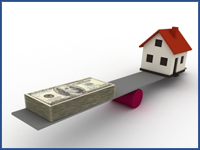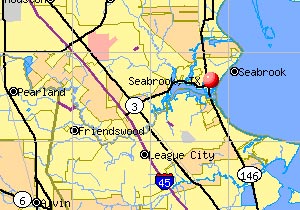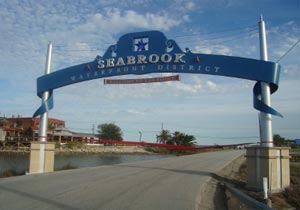HOUSTON/NEW YORK (Reuters) – With Texas one of the few bright spots in the U.S. economy, the skyline of swaggering Houston is where the action is as builders and global oil companies, from Phillips 66 to Exxon Mobil Corp, look past previous busts and spend billions on gleaming new buildings.
The U.S. shale oil and gas revolution – which has already changed industries from railroads to pipelines and refineries – is helping drive the voracious appetite for office space needed for the expanding workforce in the world’s energy capital.
Demand is so hot that Houston is one of the few places where banks – including Wells Fargo & Co, which is seen as one of the more conservative big banks – will loan money for a new building without demanding developers first have a tenant.
“Houston is booming and bar none the strongest market in the United States of America,” said Joseph Sitt, chief executive of Thor Equities, which has two projects underway in Houston.
There are some 56 office buildings totaling at least 11 million square feet under construction in and around Houston, according to real estate services firm CBRE Group Inc. That is equivalent to 190 football fields.
In the forested suburbs, Exxon has what it calls “one of the largest commercial construction projects underway in North America.” The nearly 400-acre campus with 20 buildings will have enough room for 10,000 employees.
With crude now above $100 a barrel, money is flowing freely. And while the shale oil and gas transformation means North America may be energy independent by the end of this decade, economists are wary when people say this boom will be different. They counsel caution.
“The Texas oil and gas industry is not known for long periods of stability,” Karr Ingham, economist for the Texas Alliance of Energy Producers. “Nobody wants what happened (in past busts) to happen again.”
To be sure, the amount of space being built is still only a fraction of the 88.9 million square feet developers constructed in Houston from 1980 through 1986, a flurry that more than doubled the city’s office market, according to real estate research firm Reis Inc.
The Texas economy grew 4.8 percent last year, the fastest pace among the big U.S. states. New workers are pouring into Houston, which needs new offices for the 100,000 jobs it added last year. Houston is on track to add another 80,000 this year.
But over-exuberance about real estate and oil have afflicted Houston before. In the early 1980s developers built a 71-story green glass tower with a footprint shaped like a dollar sign.
It took nearly two decades to recover from Houston’s big crash in the 1980s, which was brought on by a collapse in oil prices. Vacancy rates soared to near 30 percent in 1983 from 9.8 percent two years prior, according to Reis.
The current building cycle is in large part propelled by burgeoning domestic production of oil and natural gas unlocked from shale formations through hydraulic fracturing and horizontal drilling.
“If you are investing in Houston, you’re a believer in the energy sector long term, which we are,” said Russell Cooper, managing director of capital transactions at Shorenstein Properties LLC in San Francisco.
The firm in January bought a building of more than one million square feet in downtown Houston from Exxon for $48 million. It plans to put a new glass skin on the building and may connect it to the air-conditioned tunnel system downtown, where office workers eat and shop to escape torrential rains and steamy heat.
Exxon has put two other buildings in Houston and one in Virginia up for sale, ahead of the move to its new campus.
Houston’s Energy Corridor Home To Big Commercial Real Estate Developments
Tower cranes dot the landscape of Houston’s so-called energy corridor, about 15 miles from downtown. The area, located on the western edge of the city, is experiencing rapid growth as companies build and expand. There, refining company Phillips 66 is constructing a 14-acre campus with over a million square feet for its 1,800 employees.
Firms are loading their blueprints with plans for everything from basketball courts to childcare centers and fancy coffee shops to attract hard-to-find energy experts.
Near the Exxon campus, an entire master-planned community called Springwoods Village with room for up to 5,000 houses and apartments is going up to accommodate new workers.
While others construct facilities for employees, some companies are building space to push the frontiers of oil technology.
BP Plc is spending more than $100 million over the next five years to build a new three-story building that will house the huge supercomputing complex used to speed up BP’s search for oil and gas around the world.
“It made more sense to create a new home,” said Keith Gray, manager of BP’s High Performance Computing unit. “It became clear that a freestanding building was needed to address growth needs.”
Other oil and gas companies with buildings under construction or in preliminary stages in Houston include BHP Billiton Petroleum, Anadarko Petroleum Corp, Royal Dutch Shell and Chevron Corp, which plans a 50-story tower downtown.
One building which started on spec – meaning banks loan money for construction even if a tenant isn’t lined up – is the 550,000-square-foot Energy Center Three in west Houston.
Principal Real Estate Investors, part of Principal Financial Group, and developer Trammell Crow Co started the building with a loan of roughly $100 million from a Wells Fargo-led syndicate.
Within four months, oil company ConocoPhillips signed a lease for the entire building and half of Energy Center Four, which is not yet under construction, said Aaron Thielhorn, managing director of Trammell Crow’s Houston business unit.
Brian Stoffers, president of CBRE Capital Markets, said spec building in Houston in many ways makes it an outlier.
“The dynamics of the Houston market are so robust right now that it’s the exception to the economic rule around the rest of the country,” he said.
Of the buildings under construction, 29 will be rentals that will not be owner-occupied. Of those, 13 broke ground without signed leases but six of those have since found tenants.
Vacancy rates in the most expensive, modern office buildings in Houston are tumbling. Second-quarter vacancy slid to 6.9 percent from 12 percent in the same period two years ago, according to CBRE. The broader office vacancy rate is 14.2 percent versus a national average of 17 percent.
Any Danger Ahead in Commercial Real Estate in Houston?
While access to shale deposits has diminished worries about supplies, much of the new demand for crude oil in recent years has been led by developing nations such as China and India.
Big slowdowns in those developing economies could hit the price of crude and cool enthusiasm for building in Houston.
“If China and India have hit a plateau, then I think we have to ask where are the drivers for oil demand in the future,” said the University of Houston’s Robert Gilmer.
Chinese growth slowed to 7.5 percent in the second quarter – below the 8.9 percent average of the last six years.
Apart from shale, crude oil prices generally need to stay above $65 per barrel to produce from the deepwater Gulf of Mexico or the oilsands in Canada for companies to make money.
Another risk is overbuilding. Houston, a sprawling 8,778-square-mile metropolis, has no zoning restrictions, a fact that has some investors including New York-based GreenOak Real Estate Advisors, looking elsewhere to buy.
Owners in areas where building is constrained can reap big rewards when demand for space rises, fueling rent spikes of sometimes 20 percent. That rarely happens in Houston, where developers can easily build.
“When you’re dealing with a market like Houston, there’s nothing to hold developers back,” Ryan Severino, Reis senior economist said. “You can literally can go next door and put up a building.”
 (depicted mathematically at the right). You’ve got the Laws of Thermodynamics, the economic Law of Supply and Demand, heck you’ve even got Murphy’s Law.
(depicted mathematically at the right). You’ve got the Laws of Thermodynamics, the economic Law of Supply and Demand, heck you’ve even got Murphy’s Law.
 buyer pool significantly without those mandatory “features”. If you need to make fundamental repairs, you’re just going to have to suck it up and make them and not expect to recoup any of that money.
buyer pool significantly without those mandatory “features”. If you need to make fundamental repairs, you’re just going to have to suck it up and make them and not expect to recoup any of that money. and creates a more emotional purchase that can generate more money for the seller.
and creates a more emotional purchase that can generate more money for the seller. improvements within the city. Incorporating a funding mechanism that establishes a pay-as-you-go program with no new debt or interest. Funding increases as old debt is paid, according to Dale Rudick, Deputy Director of the City’s Public Works and Engineering Department and Executive Director of ReBuild Houston. Rudick recently explained the program during a presentation at a local CCIM chapter meeting.
improvements within the city. Incorporating a funding mechanism that establishes a pay-as-you-go program with no new debt or interest. Funding increases as old debt is paid, according to Dale Rudick, Deputy Director of the City’s Public Works and Engineering Department and Executive Director of ReBuild Houston. Rudick recently explained the program during a presentation at a local CCIM chapter meeting. is regulated by the state and will be a one-time fee. Primary uses include drainage projects providing capacity to offset future development and street projects providing added capacity for future development.
is regulated by the state and will be a one-time fee. Primary uses include drainage projects providing capacity to offset future development and street projects providing added capacity for future development.



 reportedly signed for the 235,000 square feet in proposed Five Chasewood Park. Other energy-related firms, such as Southwestern Energy and Chevron, opted for owner-occupied properties. Southwestern broke ground on its 515,000-square-foot headquarters in North Houston, while officials with Chevron announced its plans for a new 1.7 million square-foot building at 1600 Louisiana in the Central Business District (CBD). Plans for the new building will be finalized in 2014, with occupancy scheduled for late 2016. Chevron will add the third tower adjacent to its current buildings at 1400 Smith and 1500 Louisiana, creating a downtown campus complete with employee amenities such as dining, fitness, training and conference facilities. These new announcements follow the first quarter’s news of BHP Billiton’s new 560,000-square-foot headquarters building in Uptown and Phillip 66’s multiple-building campus of 1.1 million in Westchase, among others.
reportedly signed for the 235,000 square feet in proposed Five Chasewood Park. Other energy-related firms, such as Southwestern Energy and Chevron, opted for owner-occupied properties. Southwestern broke ground on its 515,000-square-foot headquarters in North Houston, while officials with Chevron announced its plans for a new 1.7 million square-foot building at 1600 Louisiana in the Central Business District (CBD). Plans for the new building will be finalized in 2014, with occupancy scheduled for late 2016. Chevron will add the third tower adjacent to its current buildings at 1400 Smith and 1500 Louisiana, creating a downtown campus complete with employee amenities such as dining, fitness, training and conference facilities. These new announcements follow the first quarter’s news of BHP Billiton’s new 560,000-square-foot headquarters building in Uptown and Phillip 66’s multiple-building campus of 1.1 million in Westchase, among others. quarter of positive absorption – with the last eight quarters averaging 1.5 million square feet each – the industrial market appears to have stabilized, waiting for the next wave of new product to enter the market. Vacancy overall is down slightly from last quarter to 6.9%, compared to 7.5% a year ago. Manufacturing space has the lowest vacancy of 5.4%. More than 1.2 million square feet in 17 properties came online during the first quarter, entering the market collectively at 74.5% preleased.
quarter of positive absorption – with the last eight quarters averaging 1.5 million square feet each – the industrial market appears to have stabilized, waiting for the next wave of new product to enter the market. Vacancy overall is down slightly from last quarter to 6.9%, compared to 7.5% a year ago. Manufacturing space has the lowest vacancy of 5.4%. More than 1.2 million square feet in 17 properties came online during the first quarter, entering the market collectively at 74.5% preleased.



